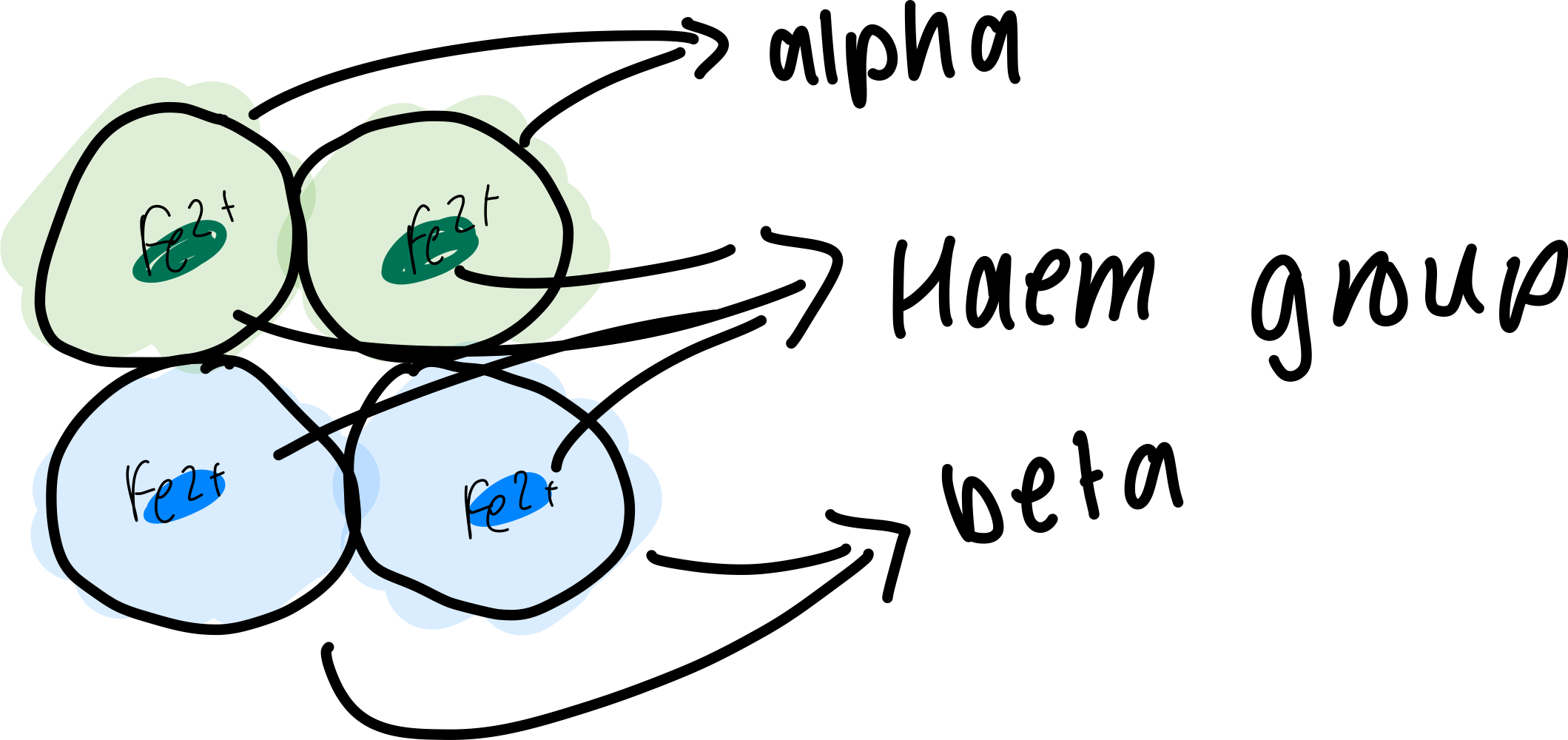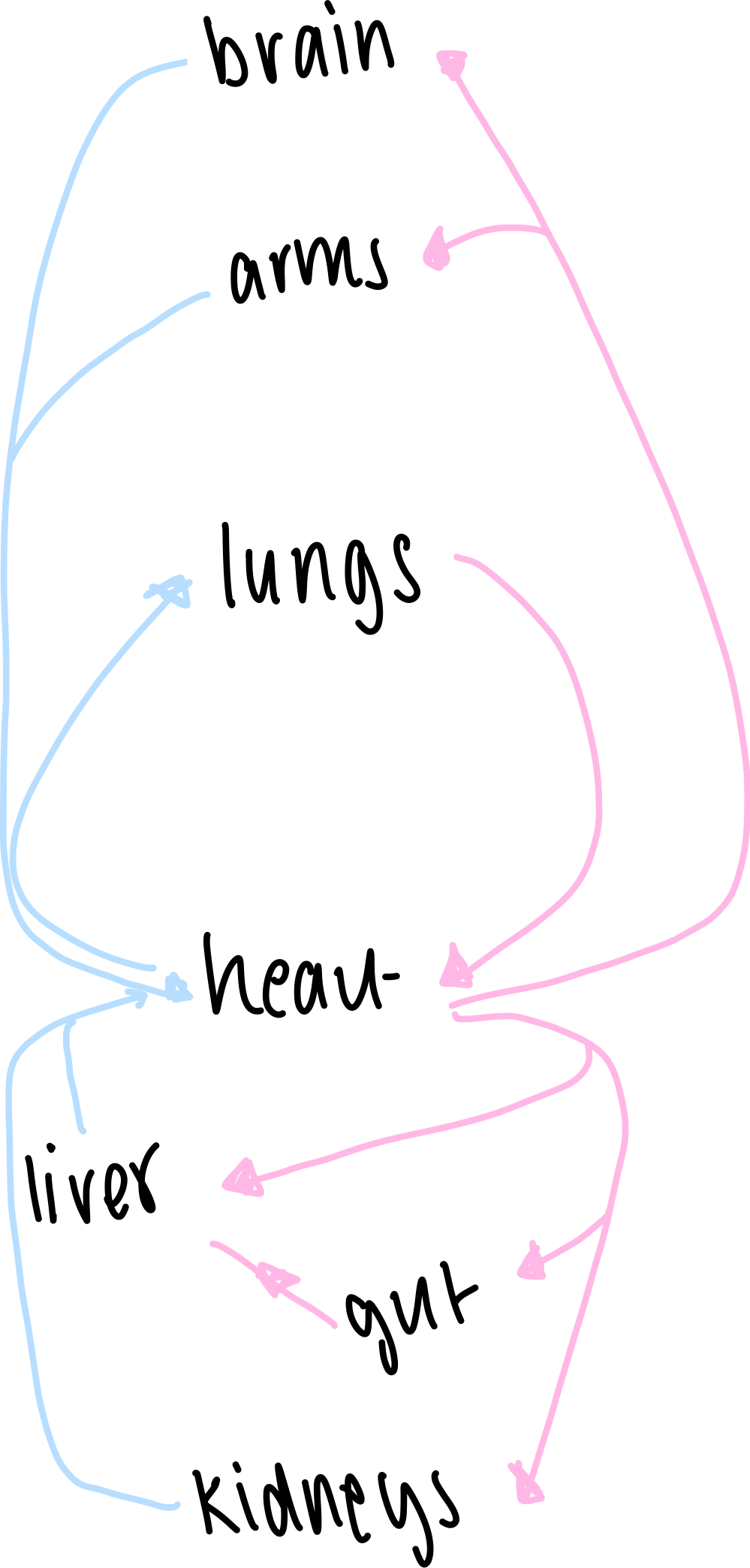3.3.4.1 Mass Transport in Animals
1/176
There's no tags or description
Looks like no tags are added yet.
Name | Mastery | Learn | Test | Matching | Spaced |
|---|
No study sessions yet.
177 Terms
Why do large organisms have transport systems?
they have a small surface area to volume ratio, so they need a specialised mass transport system to carry molecules between exchange surfaces and cells
What do mass transport systems ensure?
the efficient movement of molecules in an organism
What parts of a transport system may differ between organisms?
whether there is a specialised medium (blood)
whether a pump is neccessary
What factors change an organisms transport system?
its surface area to volume ratio
how active the organism is
When would an organism need a specialised transport system with a pump?
smaller surface area to volume ratio and more active the organism is
Why are mammals quite active
they generate their own body temperature, which requires a high metabolic rate due to respiration
Where is haemoglobin found?
erythrocytes
How has haemoglobin evolved?
it has evolved to make it efficient at loading oxygen in one set of conditions and unloading oxygen in another set
Describe the haemoglobin found in different types of organisms?
they are chemically similar and carry out the same function
What organisms is haemoglobin found?
mammals, vertabrates, starfish
What type of biological molecule is haemoglobin?
protein
Describe the structure of haemoglobin in depth
quaternary structure, 2 alpha chains, 2 beta chains, each with a prosthetic haem group
Describe the structure of 1 subunit of haemoglobin
contains a haem group with an iron Fe2+ ion
How many FE+ ions are in each heam group?
1
What gives haemoglobin a high affinity for oxygen?
Fe2+ ion
How many oxygen molecules can each haemoglobin molecule bind to when 100% saturated?
4
What does the binding of oxygen and haemoglobin form?
oxyhaemoglobin
What type of reaction is the one between haemoglobin and oxygen?
reversible
What is the equation for the formation of oxyhaemoglobin?
Hb + 4O2 → HbO8
Draw a diagram of haemoglobin

Give 2 terms for the binding of oxygen and haemoglobin?
loading
association
Where does the loading of oxygen happen in humans?
lungs
Give 2 terms to describe the releasing of oxygen from haemoglobin?
dissociation
unloading
Where does unloading of oxygen take place in humans?
respiring tissues
What type of graph is ysed to show the saturation of haemoglobin?
dissociation curve
Draw a dissociation curve for human saturation of haemoglobin with oxygen?

What is partial pressure of oxygen?
measure of oxygen concentration in the tissues
What is partial pressure of oxygen abreviated to?
pO2
What shape does a haemoglobin dissociation curve take?
sigmoid S shape
Why is it difficult for the first oxygen molecule to bind with haemoglobin at low partial pressure?
the haem groups are in the centre of the haemoglobin which makes it difficult for the oxygen to bind with it, resulting in low saturation
As partial pressure of oxygen increases, what happens to the hameoglobin molecule?
as the diffusion gradient is steeper, eventually an oxygen binds to the haemoglobin
What happens to the haemoglobin when the first oxygen molecule binds?
the shape changes making it easier for more oxygen molecules to associate with the other haem groups
Why is it easier for oxygen molecules 2 and 3 to bind with haemoglobin?
the shape is different
Why is it difficult for haemoglobin to become 100% saturated?
it is difficult for the last oxygen to diffuse and bind with the 4th haem group
Describe the conditions of the alveoli that result in oxygen loading?
high pO2
high affinity
oxygen loads
Describe the conditions at respiring tissues that cause oxygen to unload
low pO2
low affinity
high pCO2
oxygen unloads
Why does carbon dioxide cause oxygen to unload?
it causes blood to become acidic and the haemoglobin binds to H+ ions instead as higher affinity, unloading O2
What does haemoglobin have a higher affinity to than oxygen?
H+
Apart from binding with oxygen, what is another purpose of haemoglobin?
pH buffer
What is partial pressure of carbon dioxide?
measure of carbon dioxide concentration in a cell
At higher pCo2, how is oxygen unloading affected?
oxygen unloads more readily
Why do cells have higher pCO2?
when they respire
At higher carbon dioxide levels, how does the dissociation curve shift?
to the right
What is the Bohr effect?
more oxygen is released when more carbon dioxide is being produced
What is the advantage of high CO2 resulting in more oxygen being unloaded?
when excersising and cells anaerobically respire the muscles are supplied with more oxygen
What may impact how an organisms haemoglobin is altered?
environment
activity
size
How does haemoglobin adapt for organisms that live in an environment with low pO2?
higher affinity to oxygen
Why does the haemoglobin of organisms in lower pO2 have a higher affinity to oxygen?
not much oxygen available so the haemoglobin must be very good at loading any oxygen available
Where does the dissociation curve for an organism in a low pO2 environment shift?
left
Draw a dissociation curve for a human, an organism in low pO2 and an organism with high activity levels?

How does the haemoglobin alter for organisms with a high activity levels?
lower affinity to oxygen
Why do organisms with a high activity level have a lower affinity to oxygen?
so they can unload oxygen more easily
Where does the dissociation curve shift for organisms with a high rate of activity?
right
Describe the haemoglobin of a smaller mammal
lower afinity
Why do smaller animals have a high oxygen demand?
they have a higher metabolic rate for their temperature
Why do smaller organisms have haemoglobin with a lower affinity to oxygen?
so the oxygen can be unloaded more easily
Where does the dissociation curve of a smaller mammals’s haemoglobin shift to?
right
What makes our circulatory system closed?
blood is confined in vesseks
What makes our circulatory system double?
blood passes twice thrugh the heart for each complete circuit of the body
What does the blood transport?
respiratory gases, products of digestion, metabolic waste products, hormones
Draw a diagram of the circulatory system

Where does the pulmonary artery carry blood to and from?
from heart, to lungs
Where does the pulmonary vein carry blood to and from?
from lungs to heart
Where does the aorta carry blood to and from?
from heart to body
Where does the vena cava carry blood to and from?
from body to heart
Where does the renal artery carry blood to and from?
from aorta to kidneys
Where does the renal vein carry blood to and from?
from kidneys to vena cava
Draw an internal diagram of the heart?

Draw an external diagram of the heart

What is the function of the right side of the heart?
pumps deoxygenated blood to the lungs
Where does the left side of the heart pump blood to?
oxygenated blood to body
How many chambers does the heart have?
4
Compare the wall thickness of atria to ventricles?
ventricle walls much thicker
Why do the ventricles need thicker muscle walls?
they push blood out of the heart rather than into aother chamber
Compare the thickness of the muscle of right and left ventricles?
left ventricles are thicker
Why should the left ventricle wall muscle be thicker?
needs to generate higher pressure- contract more powerfull to ump blood to entire body
What is the function of the septum?
separates the 2 sides of the heart and maintains the different pressures
Why is the septum of foetus incomplete?
mixes deoxygenated blood wit oxygenated
Which blood vessels carry blood (and oxygen) to the heart?
coronary artery
What is the purpose of arteries?
carry blood away from the heart to the rest of the body
What do arteries divide into?
arterioles which form a network throughout the body
What is the artery made of?
small lumen
endothelium
elastic fibres
smooth muscle
collagen fibres and fibrous proteins
What is the purpose of the smooth lumen in the artery?
reduces friction and is folded so it can unfold when the lumen stretches
what is the purpose of the collagen fibres and fibrous proteins in arteries?
the thick wall can withstand high pressures
What is the purpose of the elastic tissue in arteries?
allows the wall to stretch and recoil - maintains diastolic pressure
What does the elastic tissue in arteries allow for the maintenance of?
diastolic blood pressure
How is friction in the arteries reduced?
by having a smooth endothelium
How is the artery endothelium specialised?
it is folded so it can stretch when the lumen stretches
What is the function of the smooth muscle in arteries?
allows contraction and vasoconstriction (narrowing of the lumen) - enables the blood to be directed to different areas of the body in demand
What is the result of the contraction of smooth muscles in arteries?
vasoconstriction
What is the function of veins?
carries blood from the rest of the body to the heart
What tissues are veins made of?
endothelium
elastic fibres
smooth muscle
collagen fibres
Compare the pressures of arteries, veins and capillaries
arteries
capillaries
veins
What is the purpose of the vein’s large lumen?
lower blood pressure
Describe the collagen, muscle and elastic tissue composition of veins to arteries?
the vein walls have less collagen, smooth muscle and elastic tissue as they do not need to perform the roles of an artery
What is the function of valves?
they prevent backflow of blood
How is blood moved back to the heart?
pressure is exerted by movement/ contraction of the muscles. There is also some residual pressure from the contraction of the left ventricle wall
Describe the structure of capillaries?
they have a very narrow lumen
1 cell thick endothelium
Describe the pressure gradient across capillaries?
high at the arteriole end and lower at the venous end
Describe the walls of capillaries?
1 cell thick- single layer of flattened endothelial cells